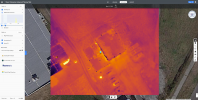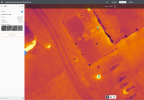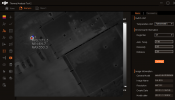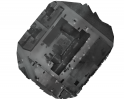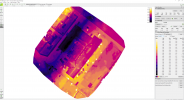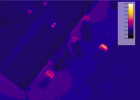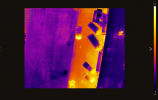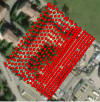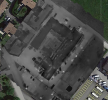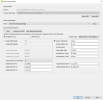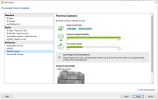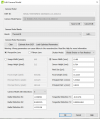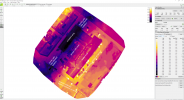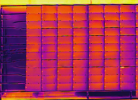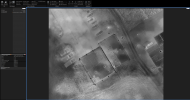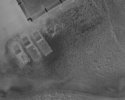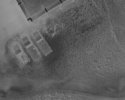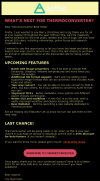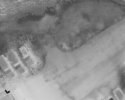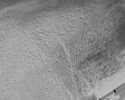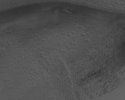I finally had time to go out and obtain the images to make a thermal map with the Enterprise Advanced.
Pix4D wanted 90 front and 90 side overlap per the directions and I found this to make the aircraft fly at only 2-3 mph. I do think that DJI Pilot does not have the correct information about the camera settings for mapping as it could of flew much lower and faster as there was such a long period between images.
When processing in Pix4D the software recommended using the settings for a FLIR Tau 2 sensor with 640 resolution.
When I tried using the Mavic Enterprise Advanced 620x512 setting the images would not stitch. I am going to try to make my own camera setting using the settings from the FLIR, but tweaking them a bit.
Overall I am very happy with the output though as when I compare it to regular images, it stitched this low sloped roof extremely well.
I chose this building as it is known to have leaks all over and I know where they are. It is basically a perfect place to train on qualitative thermography dealing with low slope roof moisture in the insulation.
Roof Specs:
Built-up Roof Covering (Not Modified Bitumen as far as I can tell due to the spacing between layers)
Unknown insulation under the covering
Corrugated metal decking for sheathing
Today's environmental factors made it an okay day for this.
Temperature got over 45* F
The sun was out and thermally loaded the roof
The wind was 10mph, but had gusting over 20mph at times.

Orthomap of thermal images.
Take note that until DJI releases and SDK that Pix4D can use, you can only make a thermal map without the radiometric data embedded in it. The above map is more like an RGB ortho.
Compare the above with this image of the building and you can see that the stitching was very good.
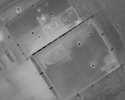
For those who want to try on solar panels, keep in mind that due to the angle of the panels you must get the drone to line up the same way or you will run into problems. Raptor Maps explains this well in their article on how to use this new drone for solar mapping.
I did not have this problem as my target has only the slightest of an angle.
Pix4D wanted 90 front and 90 side overlap per the directions and I found this to make the aircraft fly at only 2-3 mph. I do think that DJI Pilot does not have the correct information about the camera settings for mapping as it could of flew much lower and faster as there was such a long period between images.
When processing in Pix4D the software recommended using the settings for a FLIR Tau 2 sensor with 640 resolution.
When I tried using the Mavic Enterprise Advanced 620x512 setting the images would not stitch. I am going to try to make my own camera setting using the settings from the FLIR, but tweaking them a bit.
Overall I am very happy with the output though as when I compare it to regular images, it stitched this low sloped roof extremely well.
I chose this building as it is known to have leaks all over and I know where they are. It is basically a perfect place to train on qualitative thermography dealing with low slope roof moisture in the insulation.
Roof Specs:
Built-up Roof Covering (Not Modified Bitumen as far as I can tell due to the spacing between layers)
Unknown insulation under the covering
Corrugated metal decking for sheathing
Today's environmental factors made it an okay day for this.
Temperature got over 45* F
The sun was out and thermally loaded the roof
The wind was 10mph, but had gusting over 20mph at times.

Orthomap of thermal images.
Take note that until DJI releases and SDK that Pix4D can use, you can only make a thermal map without the radiometric data embedded in it. The above map is more like an RGB ortho.
Compare the above with this image of the building and you can see that the stitching was very good.

For those who want to try on solar panels, keep in mind that due to the angle of the panels you must get the drone to line up the same way or you will run into problems. Raptor Maps explains this well in their article on how to use this new drone for solar mapping.
I did not have this problem as my target has only the slightest of an angle.



